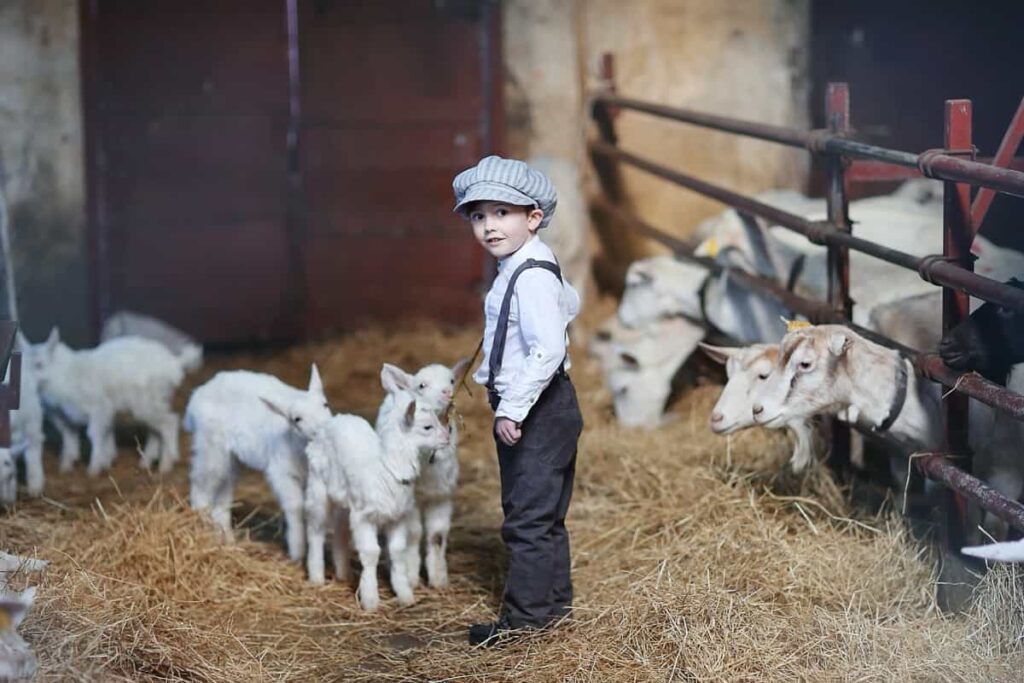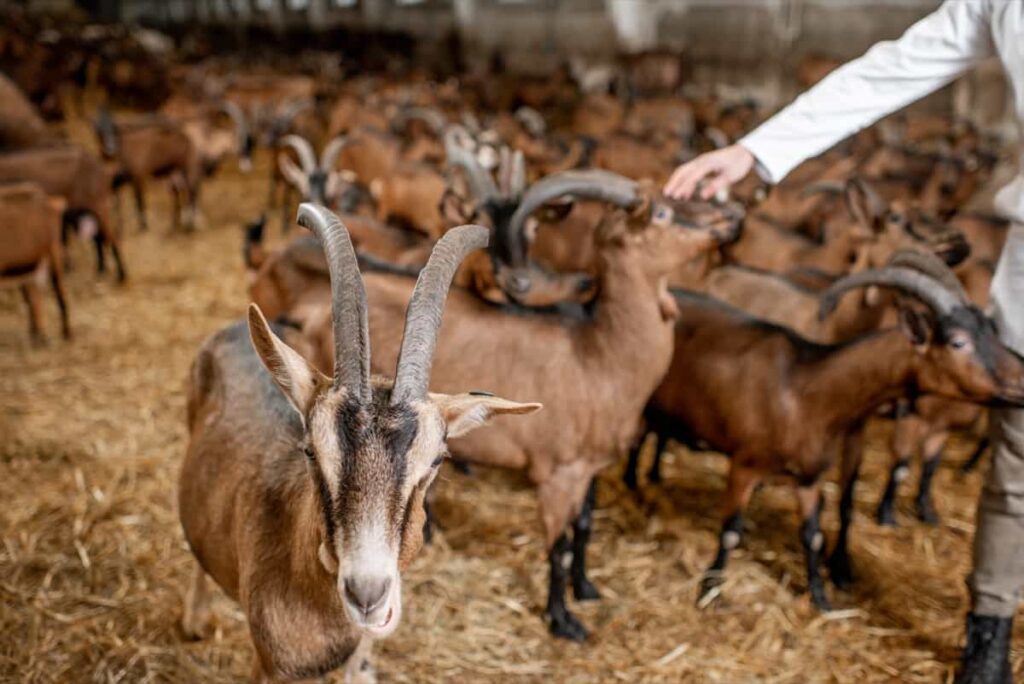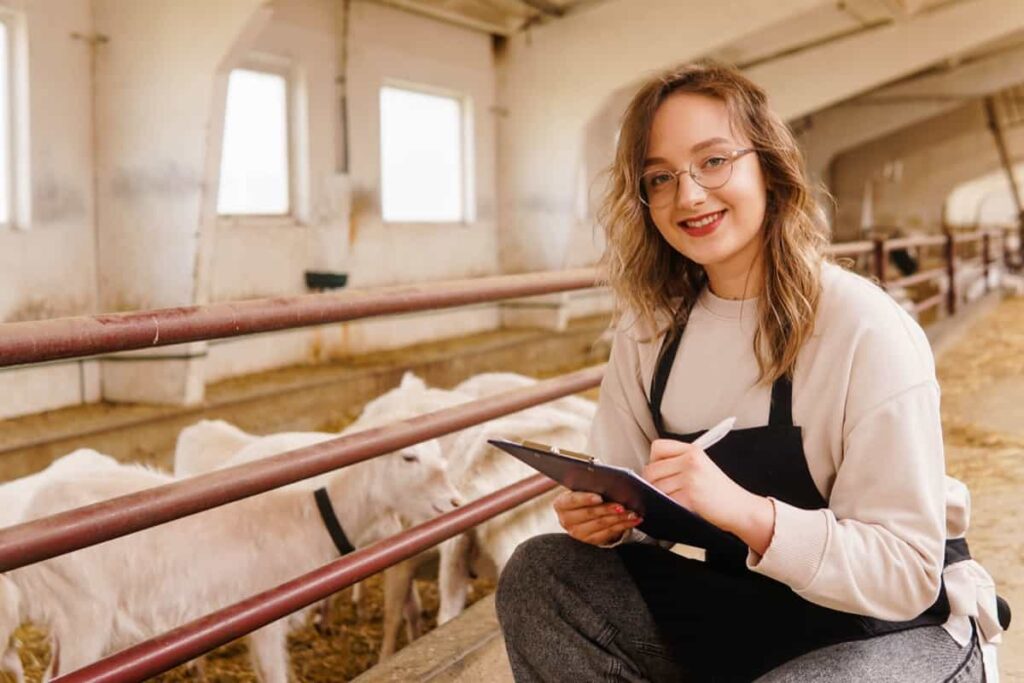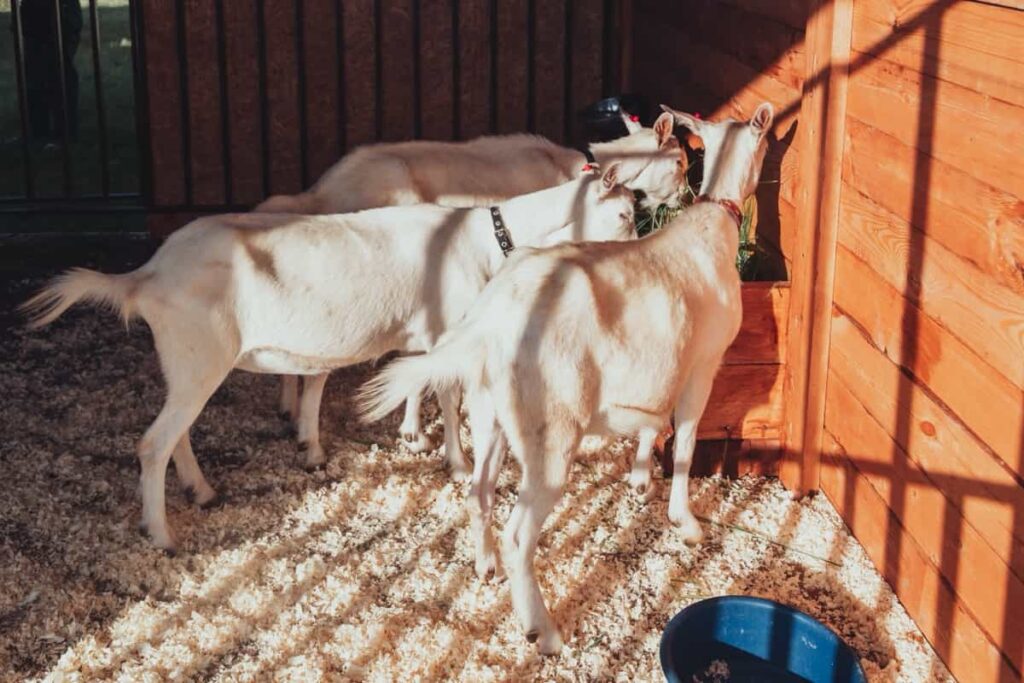Reproduction and breeding play a crucial role in ensuring the success and profitability of any goat farm. By implementing effective strategies, you can enhance genetic traits, improve overall herd health, and ultimately maximize your farm’s productivity. Providing adequate feed with balanced nutrients will optimize fertility rates and increase overall reproductive efficiency.

Reproduction and Breeding Programs in Goat Farms
Understanding the Reproductive Physiology of Goats
Reproduction is a crucial aspect of goat farming, and understanding the reproductive physiology of goats is essential for successful breeding programs. Goats, like many other mammals, have a complex reproductive system that involves multiple stages and hormones. Another key aspect of goat reproduction is understanding the process of fertilization and gestation. After successful mating, fertilization occurs within the doe’s reproductive tract for further development.
Selecting the Right Breeding Stock for Goat Farming
Selecting the right breeding stock for your goat farming is crucial to ensure healthy and productive offspring. You need to assess the overall health and condition of potential breeding stock. Look for goats that are free from any diseases or genetic abnormalities that could be passed on to their offspring.
Conduct thorough veterinary checks and ask for medical history records. Another important aspect is evaluating the genetics of the animals. Choose goats with desirable traits such as good milk production, meat quality, or disease resistance. Temperament is also something worth considering when selecting breeding stock.
Implementing Proper Nutrition for Reproduction and Breeding
Proper nutrition is important in the reproductive success of goats. Providing adequate amounts of high-quality forage is essential. Goats are natural browsers, so offering them a variety of browse plants can help meet their nutritional needs. This can include shrubs, tree leaves, and even weeds. Additionally, supplementing with quality hay or silage can ensure they receive enough fiber.
In case you missed it: Goat Breeding and Genetics for Improved Productivity and Disease Resistance

In addition to forage, it’s important to provide goats with balanced feed rations that contain all the necessary nutrients. A mineral supplement specifically formulated for breeding animals should be included as well. Water is another critical component of proper nutrition for reproduction and breeding in goats. Access to clean and fresh water at all times is essential for overall health and reproductive success.
Managing Breeding Cycles and Estrus Detection in Goats
To ensure successful breeding, it’s important to monitor your goats for signs of estrus closely. This includes observing changes in behavior such as restlessness, mounting other goats, or increased vocalization. Additionally, physical indicators like a swollen vulva and clear vaginal discharge can also signal that a goat is in heat.
Accurate detection of estrus allows you to plan mating schedules more efficiently. By carefully managing these breeding cycles and promptly identifying estrus in your goats, you can enhance reproductive efficiency on your farm. Patience and attentiveness are key qualities needed when monitoring your herd for optimal breeding success.
Disease Prevention and Health Management in Reproduction Programs
Preventing diseases and managing their overall health is essential to ensure a high fertility rate and healthy offspring. It’s important to implement proper biosecurity measures on your farm. Vaccination plays a vital role in disease prevention in goats. Consult with a veterinarian to develop a goat vaccination based on local disease prevalence and risks specific to your area.
Vaccinating against common goat diseases such as tetanus, pneumonia, clostridial infections, and others will help safeguard the reproductive health of your herd. Additionally, maintaining good nutrition is key to supporting optimal reproductive function in goats. A qualified veterinarian should conduct regular monitoring through physical exams or diagnostic tests experienced in goat health management.
Genetic Selection and Improvement Strategies for Goat Breeding
By carefully selecting breeding stock based on desired traits, farmers can enhance important characteristics such as milk production, meat quality, and disease resistance. To begin with, it’s essential to have a clear understanding of the specific goals you aim to achieve through your breeding program. The popular strategy is using performance records as a basis for selection.
Implementing effective genetic selection strategies is vital for improving the overall quality of a goat herd over time. By carefully examining performance records and pedigrees, considering crossbreeding options, and taking into account various important aspects beyond just physical characteristics alone – farm owners can ensure they are creating healthier generations of goats that meet their specific farming goals.
Record Keeping and Data Management for Breeding Programs
Accurate record keeping allows breeders to track the reproductive efficiency of individual goats over time. Regularly updating these records ensures that breeders have a comprehensive overview of each goat’s reproductive history. Data management software or spreadsheets specifically designed for goat breeding can be immensely helpful in organizing all this information efficiently. These tools allow farmers to input data easily while providing clear visualizations like graphs or charts that highlight trends or anomalies in breeding outcomes.
In case you missed it: Boer Goat Breed Information: Breeding, Raising, Characteristics, and Care

Environmental Factors Affecting Reproduction in Goats
The important environmental factor is temperature. Extreme heat or cold can have adverse effects on goat reproduction. Adequate nutrition is essential for optimal reproductive performance. The availability of clean water also plays a vital role in goat reproduction. Housing conditions are another critical aspect to consider.
Overcrowding or inadequate ventilation can increase stress levels among goats, impacting their reproductive health. By addressing these environmental factors through proper management practices, you will create an environment that supports healthy reproduction within your goat farming operation.
Utilizing Artificial Insemination Techniques in Goat Farming
Artificial insemination (AI) is a valuable tool that can greatly enhance reproduction and breeding programs in goat farming. This technique involves the introduction of semen from carefully selected bucks into the reproductive tract of female goats, bypassing the need for natural mating.
With AI, you have access to a wide range of high-quality genetic material, allowing you to improve traits such as milk production, growth rate, and disease resistance in your herd. They will also be able to guide you through the process of synchronizing estrus cycles in your does so that insemination can occur at optimal times. It’s essential to follow recommended protocols and maintain strict hygiene standards throughout the procedure.
Evaluating the Economic Impact of Reproduction and Breeding Programs
The main factor for evaluating the economic impact is the cost-benefit analysis. Factors such as labor costs, feed expenses, veterinary care, and equipment investments should all be taken into account. Additionally, it’s essential to assess how reproductive efficiency affects overall profitability.
A well-executed breeding program can result in increased herd size, improved genetics, and higher-quality offspring. Moreover, by maintaining accurate records throughout the reproduction process, farmers can analyze data on fertility rates, conception rates, and kidding percentages. Market demand for high-quality goat products also plays a significant role in assessing economic impacts.
Frequently Asked Questions (FAQ) on Reproduction and Breeding in Goat Farming
What Nutritional Requirements Are Essential During the Breeding Season?
During the breeding season, it’s vital to provide your goats with proper nutrition to support optimal reproductive performance. Ensure they receive a well-balanced diet rich in protein minerals along with sufficient clean drinking water throughout the day.
In case you missed it: How to Maximize Profit in Goat Farming: Best Practices and Techniques

What is the Ideal Age for Breeding Goats?
Goats can start breeding as early as six months of age, but it is generally recommended to wait until they are at least 8-10 months old before introducing them to a buck.
Do I Need to Keep Detailed Records of My Goat’s Reproductive History?
Maintaining accurate records of each doe’s heat cycles, breeding dates, kidding details, and overall reproductive performance will help you make decisions regarding future breeding.
Conclusion
Reproduction and breeding programs allow you to selectively breed goats with desirable traits such as high milk production, disease resistance, or meat quality. By carefully selecting the right breeding stock, you can improve the genetic potential of your herd over time. These programs offer many benefits that can greatly impact the productivity and profitability of your farm.
- Types of Grass Growing for Goat Farm
- How to Train Goats for Milking: A Beginners Guide
- Goat Milking Practices and Equipment: A Beginner’s Guide
- Goat Farming for Fiber: Producing Mohair and Cashmere
- Maximizing Goat Milk Production: Tips for Dairy Goat Farmers
- Goat Farming as a Family Business: Strategies for Success
- Profitable Kenya Goat Breeds for Commercial Dairy and Meat Business
- Unlock the Secrets of Oberhasli Goat: Discover Raising and Management Practices
- Ultimate Guide to Myotonic Goats: Explore Profile to Raising